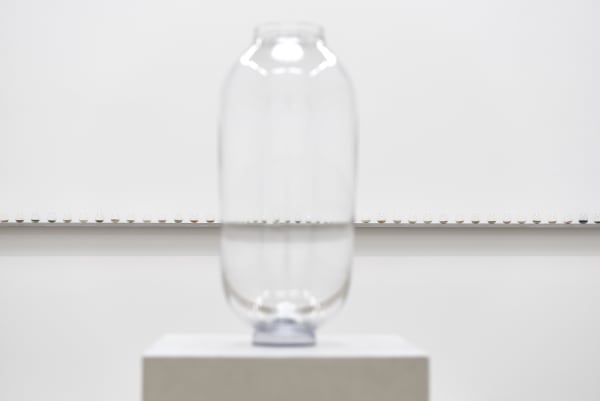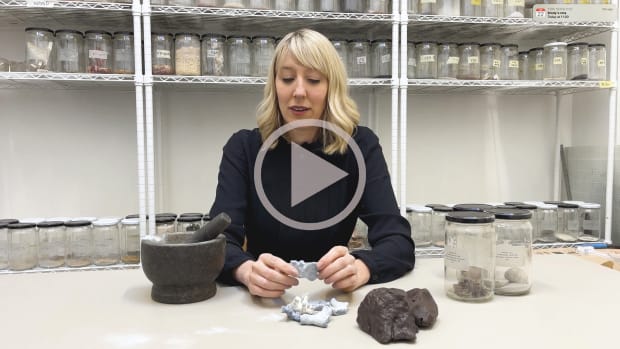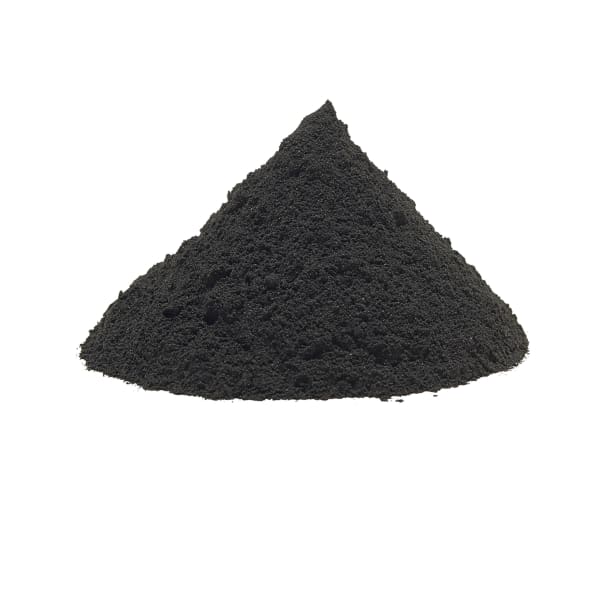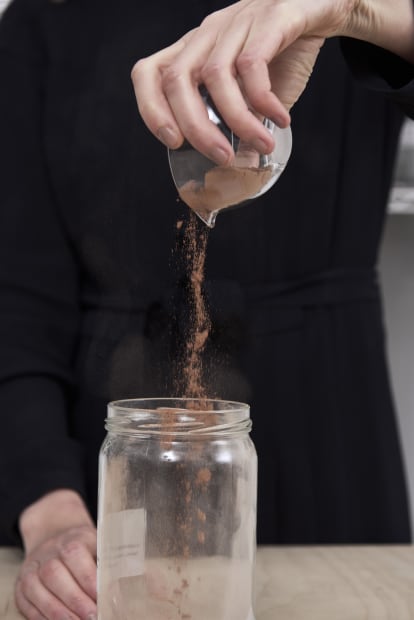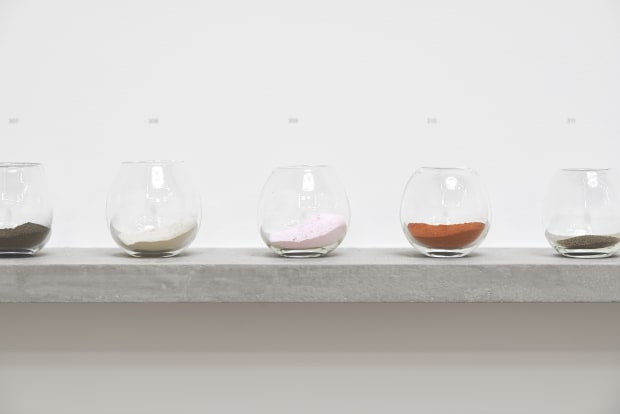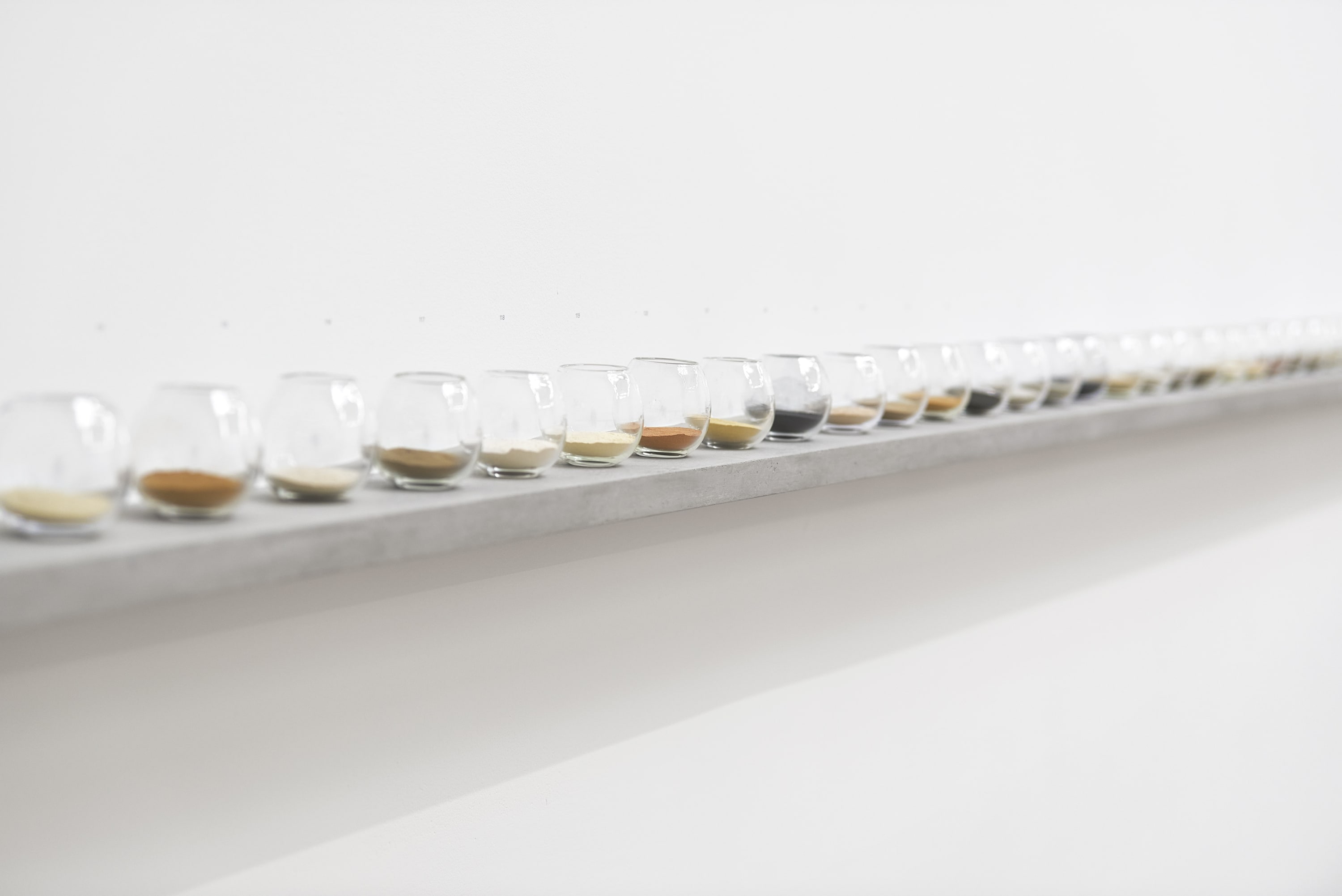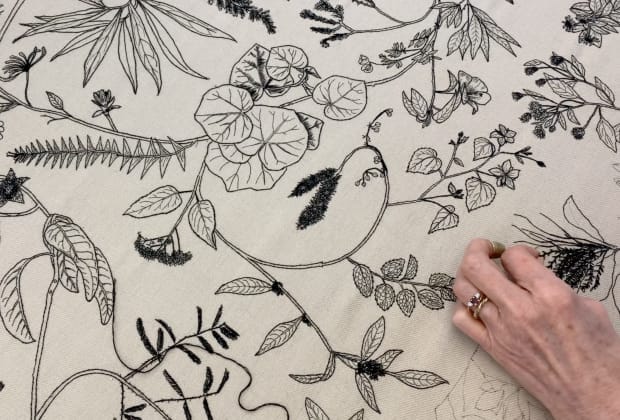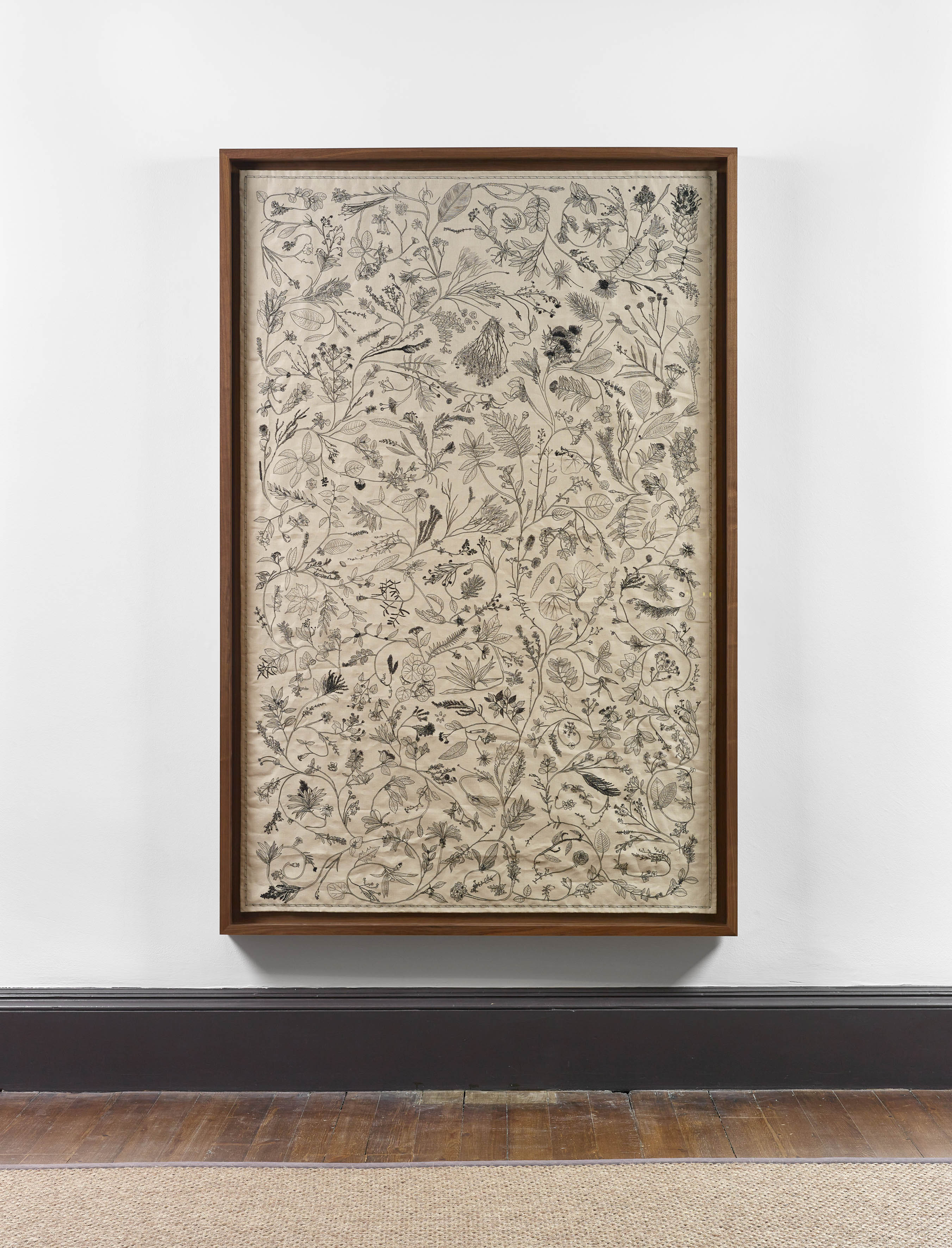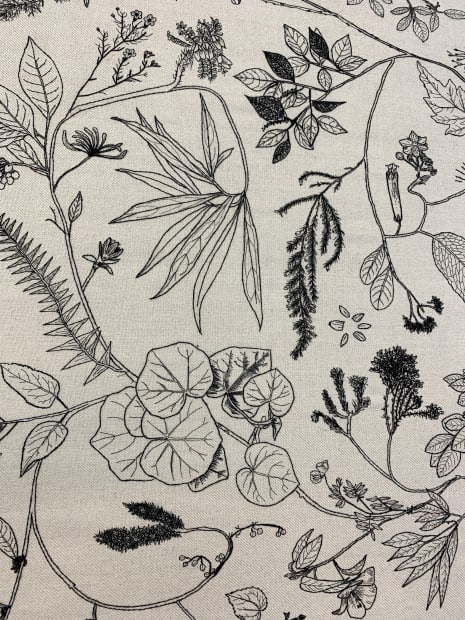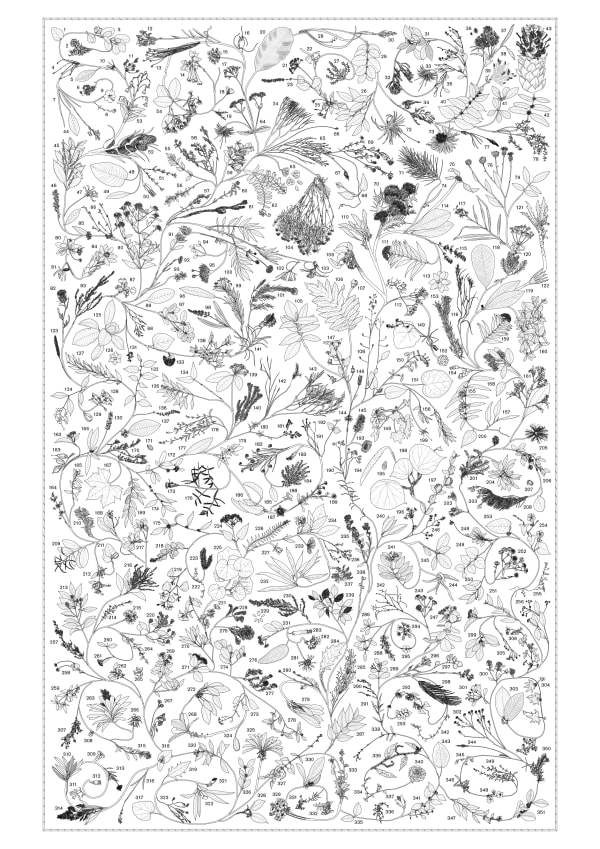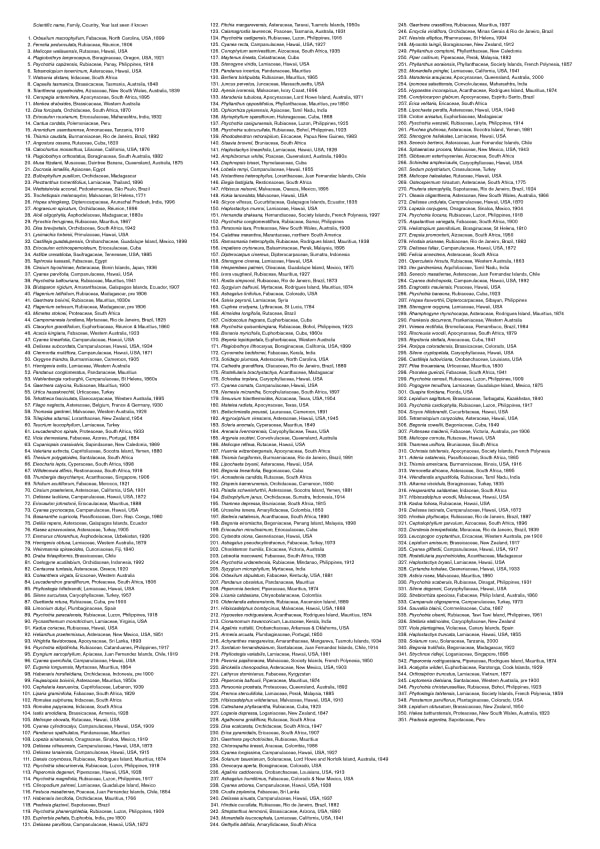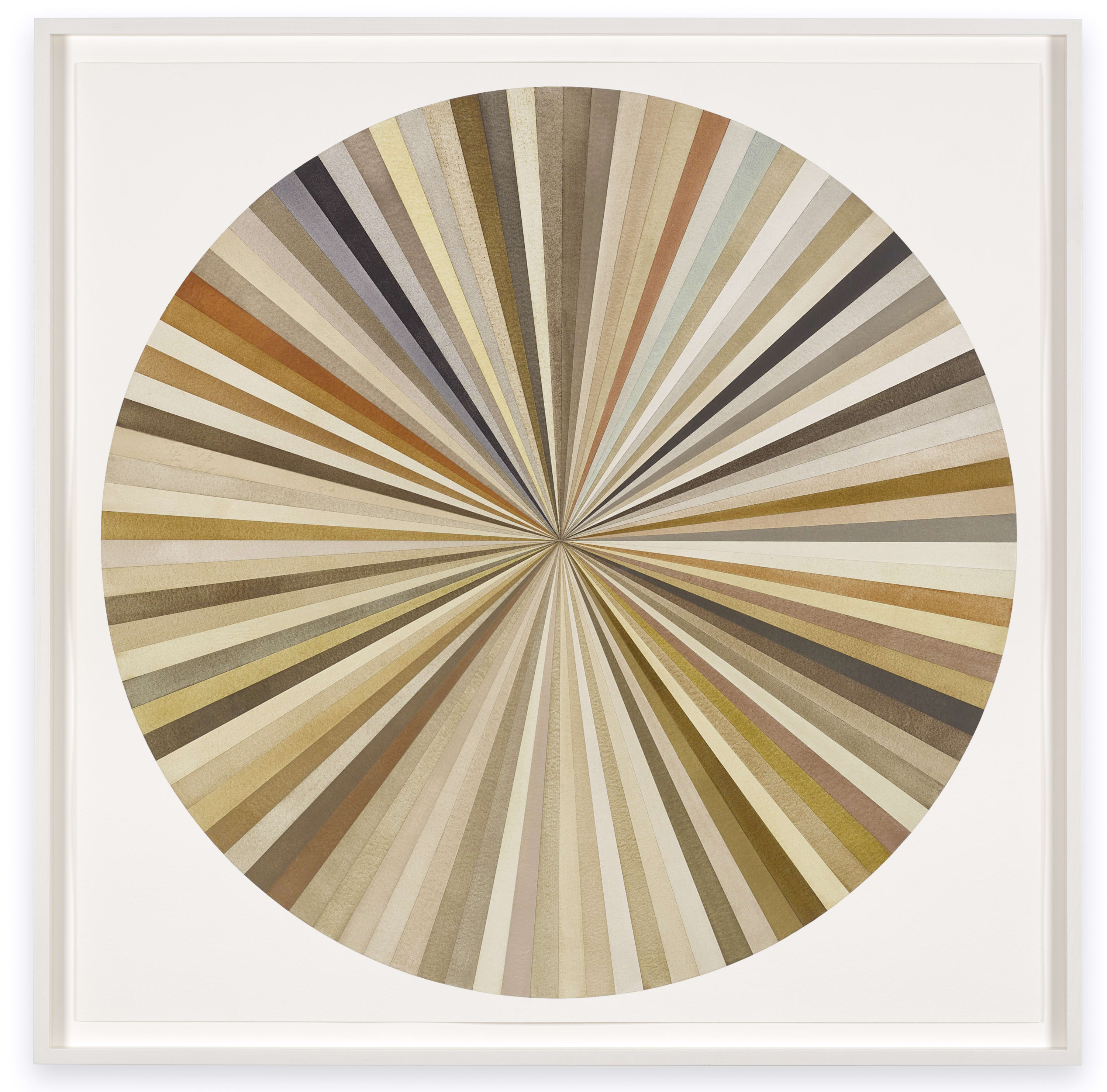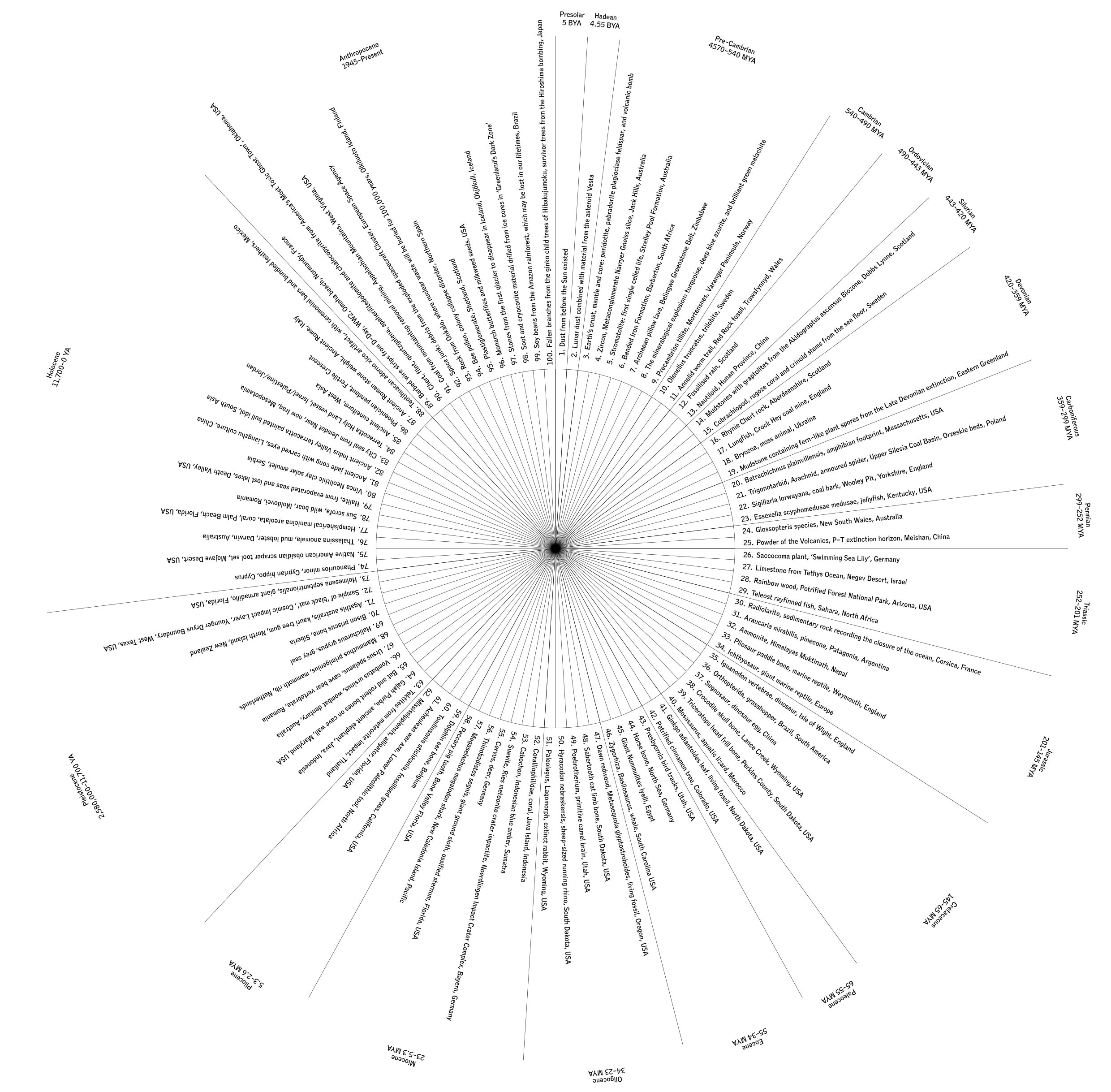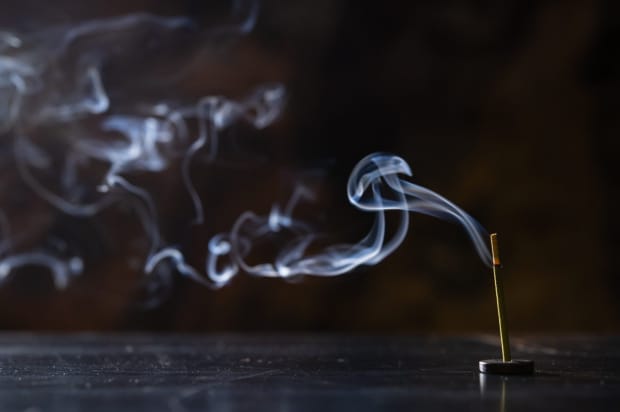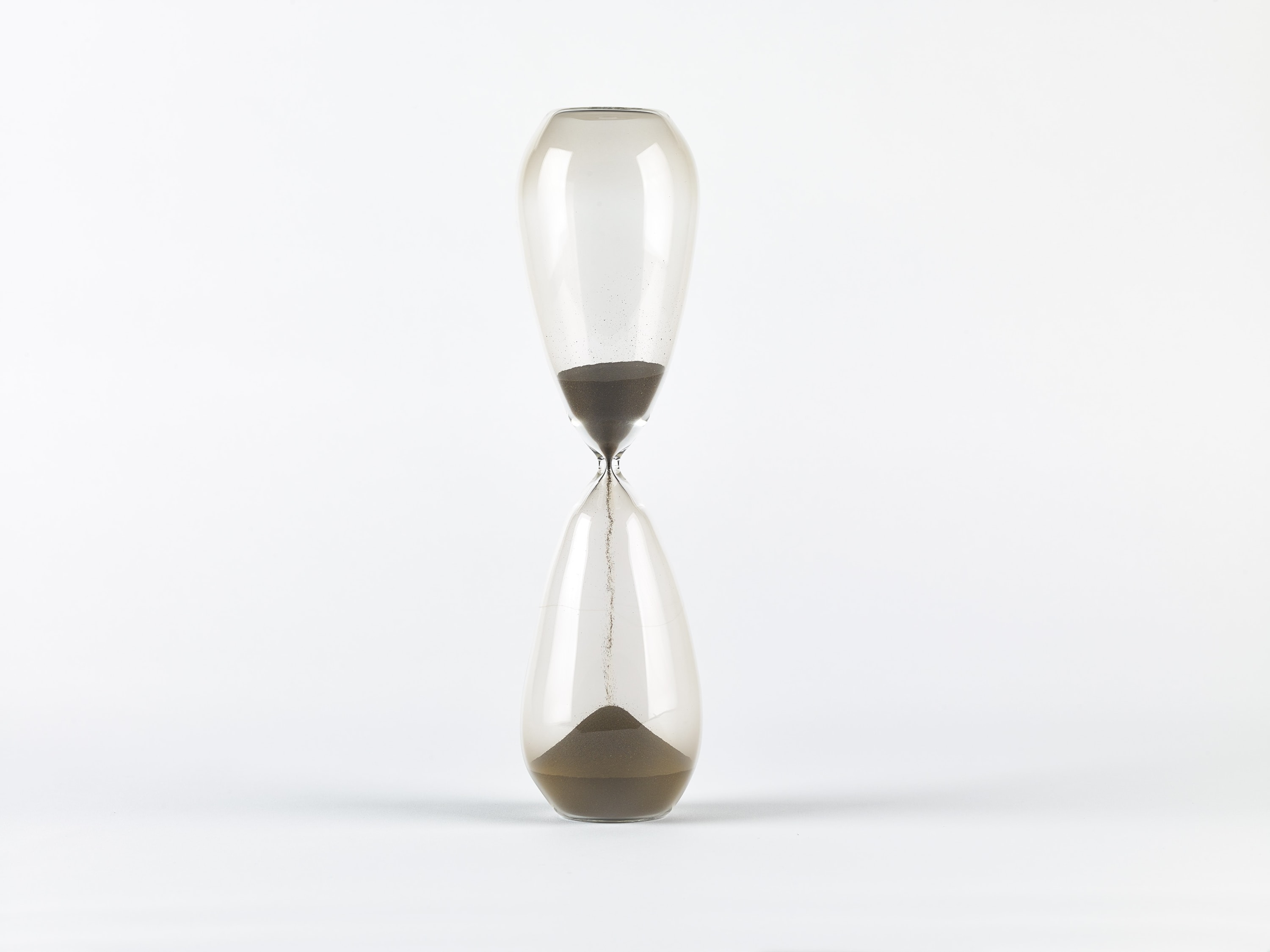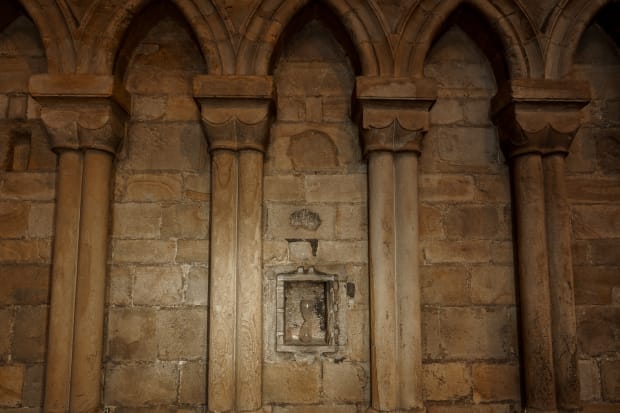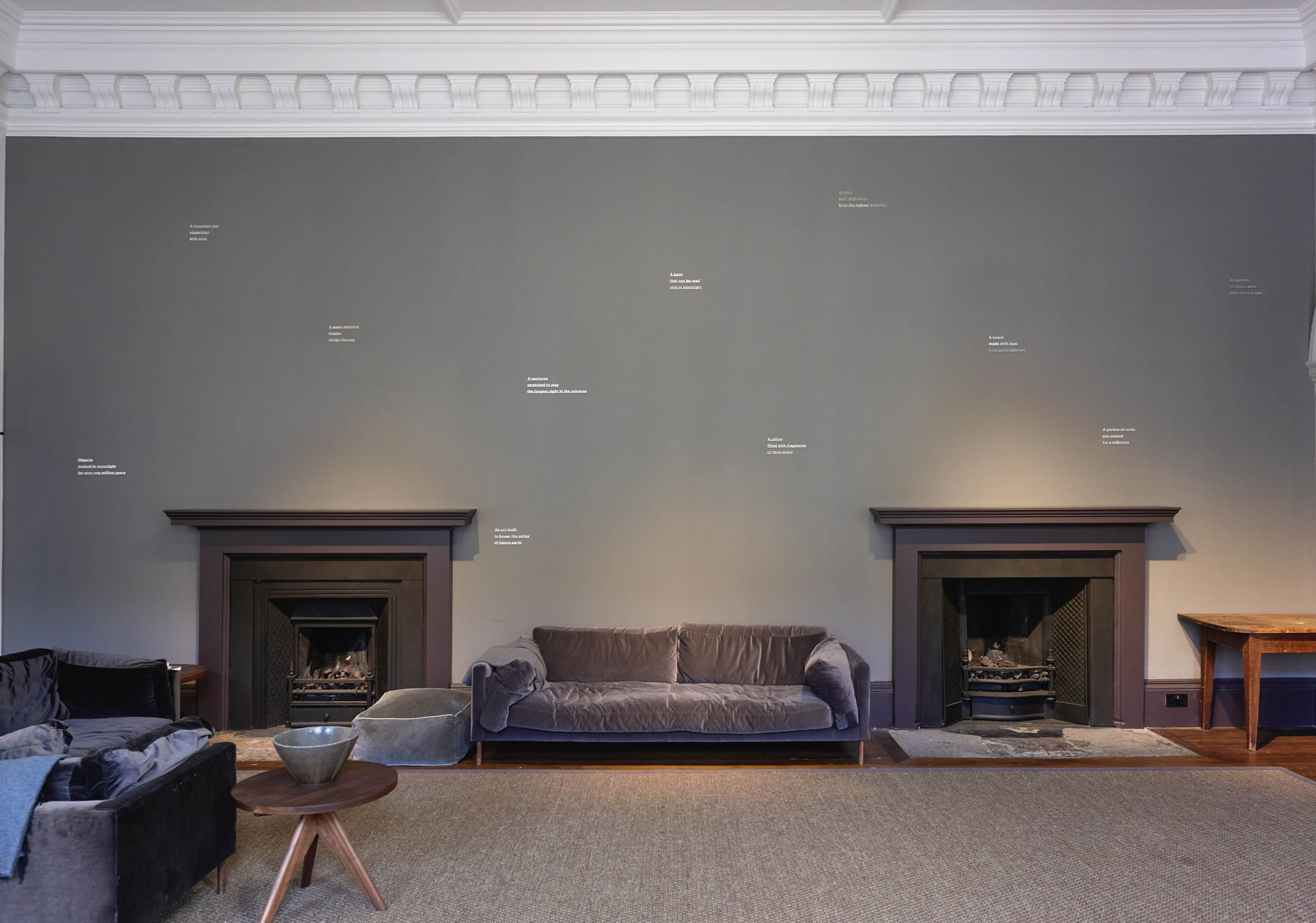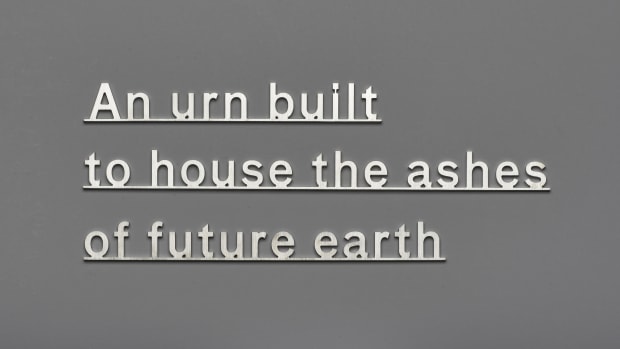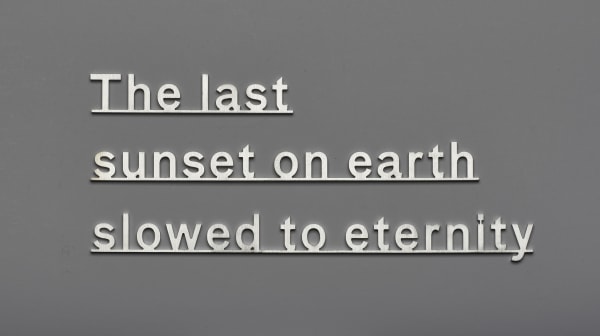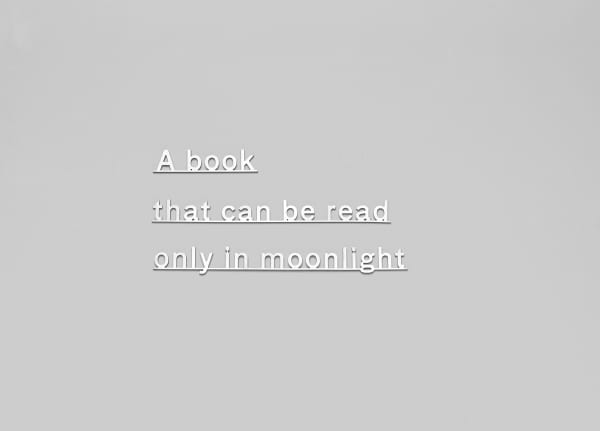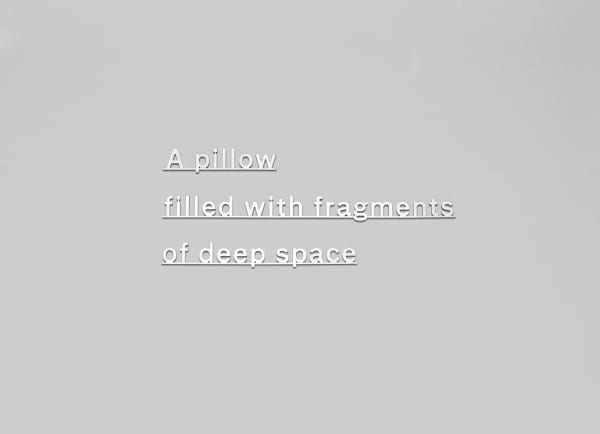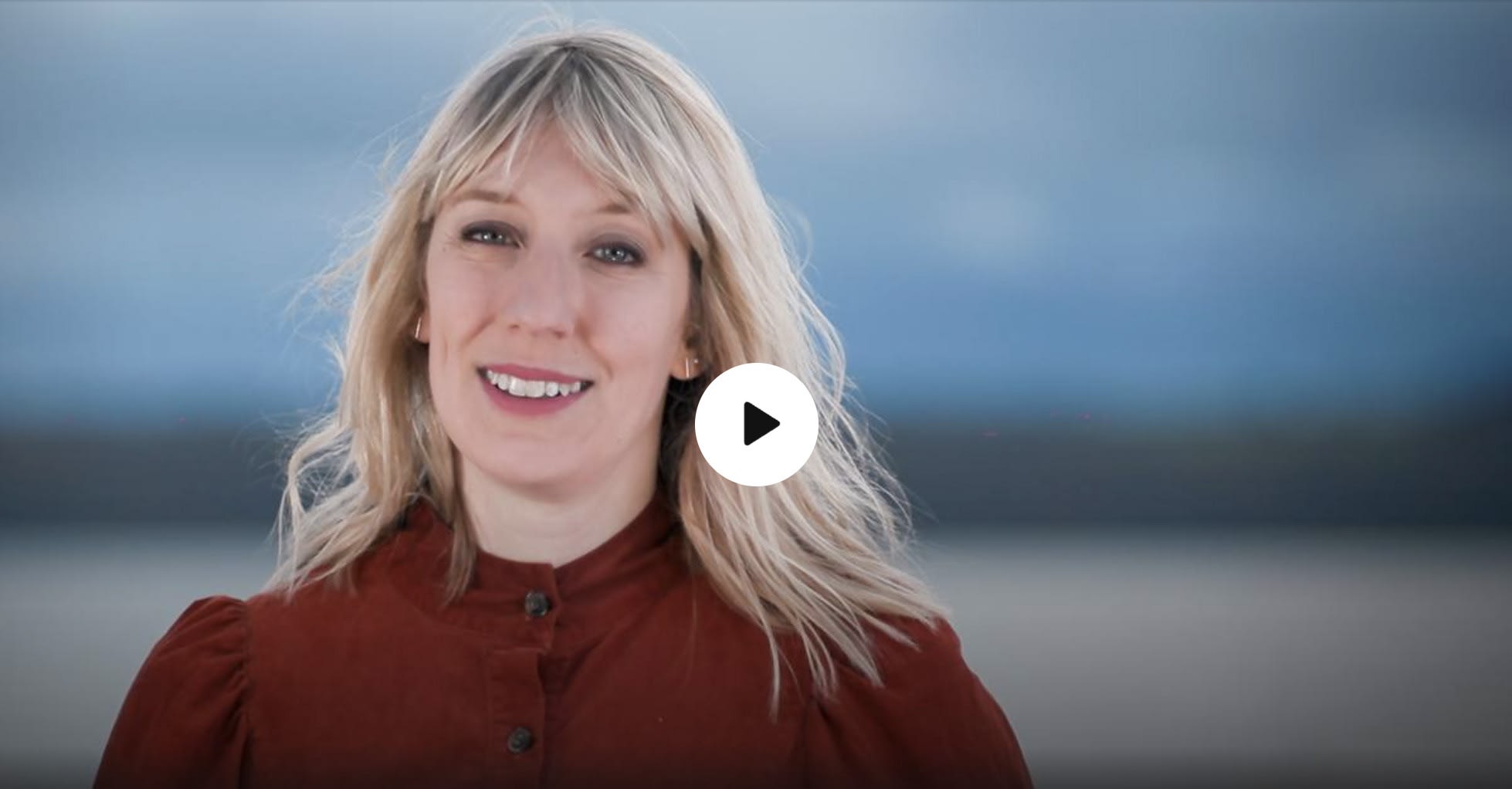-
-

-
REQUIEM
-

(547 MYR) The first true skeletons: sediment surrounding Cloudina carinata, Driedoornvlakte, Rietoog, Hardap Region, Namibia
-

(70 MYR) Silts from an ancient ocean floor in Antarctica containing fossil woods from lush forests Seymour Island, East Coast of Antarctica Peninsula
-

(900 -1,100 CEE) Medieval Viking coral beaded necklace, Denmark
-

(2,006 CE) Bee pollen, colony collapse disorder, Northern Spain
-
-

-

-

-

-
 Katie PatersonEvergreen, 2022351 extinct plants embroidered in silk thread on linen
Katie PatersonEvergreen, 2022351 extinct plants embroidered in silk thread on linen
Series of 10 with 2 APs. This is #1.228.5 x 146 cm
90 x 57 1/2 in (Embroidery)
239.5 x 157 x 10 cm
94 1/4 x 61 3/4 x 4 in (Framed) -

Detail of Evergreen, 2022
-
Endling
Endling is schematic circular painting which gathers the history of our planet in 100 pigments, ground from the pre-solar dust of 5 billion years ago to the ginkgo trees of Hibakujoumoku. The earliest life on Earth begins at ‘12 o’clock’ moving through all eras, and all the major extinctions, to the present day.
-

Katie Paterson
Endling, 2021
mixed media in 100 pigments ground from the pre-solar dust of 5 billion years ago to the ginkgo trees of Hibakujumoku
series of 10 with 2 APs. This is #1.
92 x 92 cm
36 1/4 x 36 1/4 in
(paper)
97 x 97 x 5.7 cm
38 1/4 x 38 1/4 x 2 1/4 in
(framed) -
 Diagram of 'Endling', 2021
Diagram of 'Endling', 2021 -

Katie Paterson, To Burn, Forest, Fire, 2021
Commissioned by IHME Helsinki, 2021. Photo: Veikko Somerpuro
-
The Moment
The Moment is a timepiece in the shape of a hand-blown (quarter) hourglass, filled with star dust – the fossilised remnants of a time before the Earth and before the Sun reminding us, always and in the moment, of the preciousness of time.
-

-

Installation of The Moment, Durham Cathedral, Durham, 2022
Requiem is a commission by Ingleby Gallery and the National Glass Centre as part of the Glass Exchange project, and the work will be on view at the National Glass Centre, Sunderland, from 17 June – 11 September 2022. It will be accompanied by a publication which includes essays by David Farrier and Jay Griffiths alongside insightful, explanatory texts by Jan Zalasiewicz, Emeritus Professor of Paleobiology, at the University of Leicester. We are very grateful to them all.
Glass Exchange is supported using public funding by the National Lottery through Arts Council England, with additional funding from Art Fund, Henry Moore Foundation and the Coastal Communities Fund, and with thanks to the University of Sunderland and Durham Cathedral.
-
IDEAS
-
 Installation of work by Katie Paterson in the "Feast Room", Ingleby, Edinburgh. Photograph: John McKenzie
Installation of work by Katie Paterson in the "Feast Room", Ingleby, Edinburgh. Photograph: John McKenzie -
 Katie PatersonIDEAS - (An urn built to house the ashes of future earth), 2021Micro-waterjet-cut Sterling Silver
Katie PatersonIDEAS - (An urn built to house the ashes of future earth), 2021Micro-waterjet-cut Sterling Silver
Edition of 3, this is 1/310.8 x 24 x 0.3 cm
4 1/4 x 9 1/2 x 1/8 in -
-
 Katie PatersonIDEAS - (The last sunset on earth slowed to eternity), 2021Micro-waterjet-cut Sterling Silver
Katie PatersonIDEAS - (The last sunset on earth slowed to eternity), 2021Micro-waterjet-cut Sterling Silver
Edition of 3, this is 1/311 x 22.9 x 0.3 cm
4 3/8 x 9 1/8 x 1/8 in -
 Katie PatersonIDEAS - (A book that can be read only in moonlight), 2021Micro-waterjet-cut Sterling Silver
Katie PatersonIDEAS - (A book that can be read only in moonlight), 2021Micro-waterjet-cut Sterling Silver
Edition of 3, this is 1/311.1 x 22 x 0.3 cm
4 3/8 x 8 5/8 x 1/8 in -
 Katie PatersonIDEAS - (A pillow filled with fragments of deep space), 2021Micro-waterjet-cut Sterling Silver
Katie PatersonIDEAS - (A pillow filled with fragments of deep space), 2021Micro-waterjet-cut Sterling Silver
Edition of 3, this is 1/311.1 x 26.2 x 0.3 cm
4 3/8 x 10 1/4 x 1/8 in
-
-
KATIE PATERSON | TED WOMEN 2021
THE MIND-BENDING ART OF DEEP TIME -

Katie Paterson
Current viewing_room
